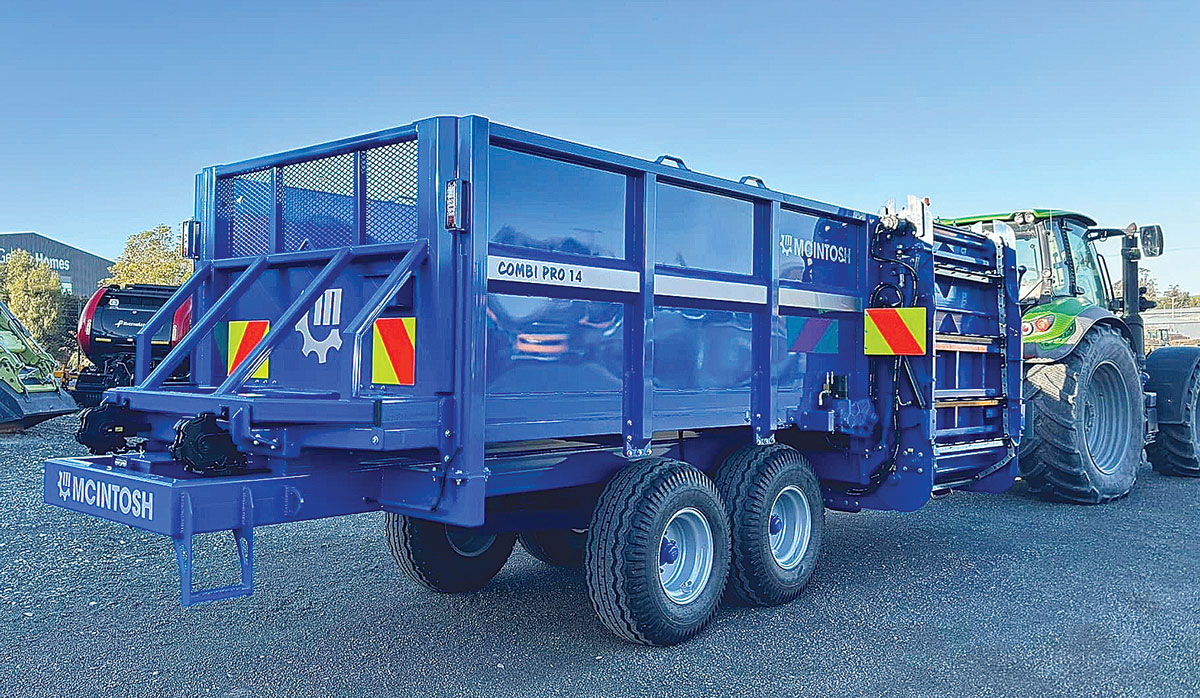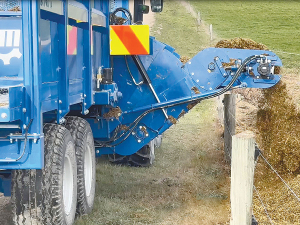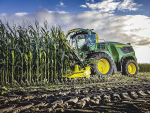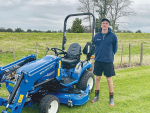Already well known for its silage wagons, tip trailers and an extensive range of bale feeders, McIntosh Farm Machinery has expanded its product offering with their first dual purpose machine, the Combi Pro.
Offering the ability to feed clamped silages, fodder beet and both round and square bales, the Combi Pro will be offered in four models with 14.3, 16.9, 17.8 and 20.9 cubic metre capacities. Developed using a modular construction technique, the capacities are achieved by using a 2100 or 2480mm wide and a standard or 1200mm longer body.
As is the case with all the Mcintosh products, strength is always a key consideration, with Brett McIntosh commenting, “We build with a mindset of strength and reliability – then we wonder what it weighs”.
That build quality features a 5mm thick medium tensile steel floor and a rear door pulled forwards on 13mm floors chains, rather than a single hydraulic ram seen in some competing designs.
“This means there is less of a step down onto the cross conveyor, which can result in blockages,” says Brett. “But more importantly, it means that the door stays aligned within the body as it is pulled from either side, rather than a centrally-mounted ram that can result in major distortion of the door’s extremities.”
The layout also means that the floor area is smooth with no risk of product leakage or jamming from stones.
Product is brought forward onto a 1500mm wide cross conveyor, featuring 3-inch, 12,000lb rated, zinc-plated roller chains. In turn, material is passed to the vertical discharge conveyor, that is set under the cross conveyor. At the discharge point, a cleverly engineered, angled extension, ensures material is ‘thrown’ away from the side of the wagon, to deliver into troughs or onto feed pads, with the added benefit of being able to deliver material over fence boundaries or hot wires.
In the vertical position the extension is no wider than the main arm, folding in tight for transport, but when the main conveyor arm is lowered to the 45 degrees position, the extension arm is 600mm wider, enabling product to be placed over a fence line. Anything shorter will see product dropped on the fence. The elevator travels from the vertical park position to 18 degrees from the ground, so offering an arc of travel of 72 degrees, much greater than the more typical 45 degrees of movement.
Brett comments, “While some other brands have fixed curved conveyor ends to try and get over fences, the design makes the machines over 3.1m wide, making road travel dangerous when vehicles come from the other direction. Our design sees the conveyor extension fold vertically for travelling on the farm and road work.”
 |
|---|
|
The conveyor extension folds vertically for easier travelling on the farm and road.
|
This extension arm can be particularly useful in wet conditions because the rig does not have to travel over ground that might already be pugged by stock and of course, removes the need to get the tractor and feeder through gateways and the encircling mob. In addition, a mechanically adjusted linkage controls the angle of the conveyor tip, allowing it to be adjusted to suit individual circumstances.
With maintenance in mind, the discharge conveyor is supported by twin hydraulic cylinders, delivering smooth operation, while also resisting any twisting forcers, while also incorporating a self-tensioning mechanism for the roller chains for constant tension.
Additionally, bronze bushes are used in the floor shaft, while greasing is taken care of from the side of the machine for all key areas, including the tandem axle assemblies. A four-cell weighing system is complemented by an easily viewed display panel, while a redesign of the drawbar area has resulted in cleaner lines, making tight turns, particularly on feed pads, much easier.
Bolt-on side panels offer increased rigidity and durability, while also making replacement of any badly damaged panels much easier. Standard equipment includes LED lighting, flashing rear lights, hazard marker panels and a rubbish bin for plastics, netting or string removed from bales.




















